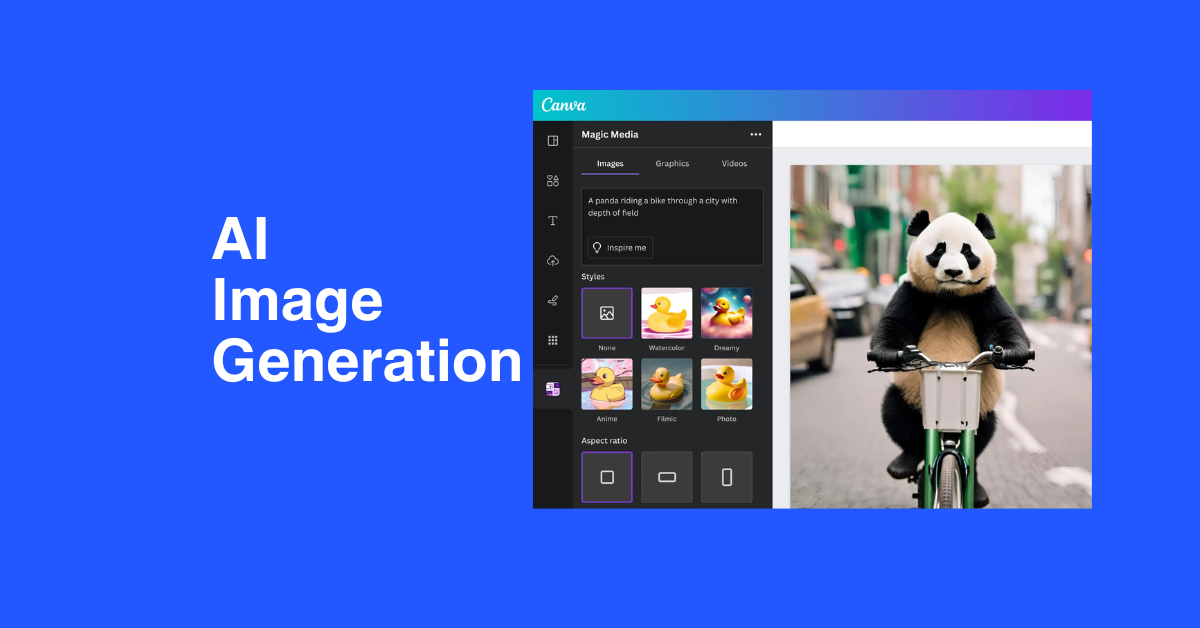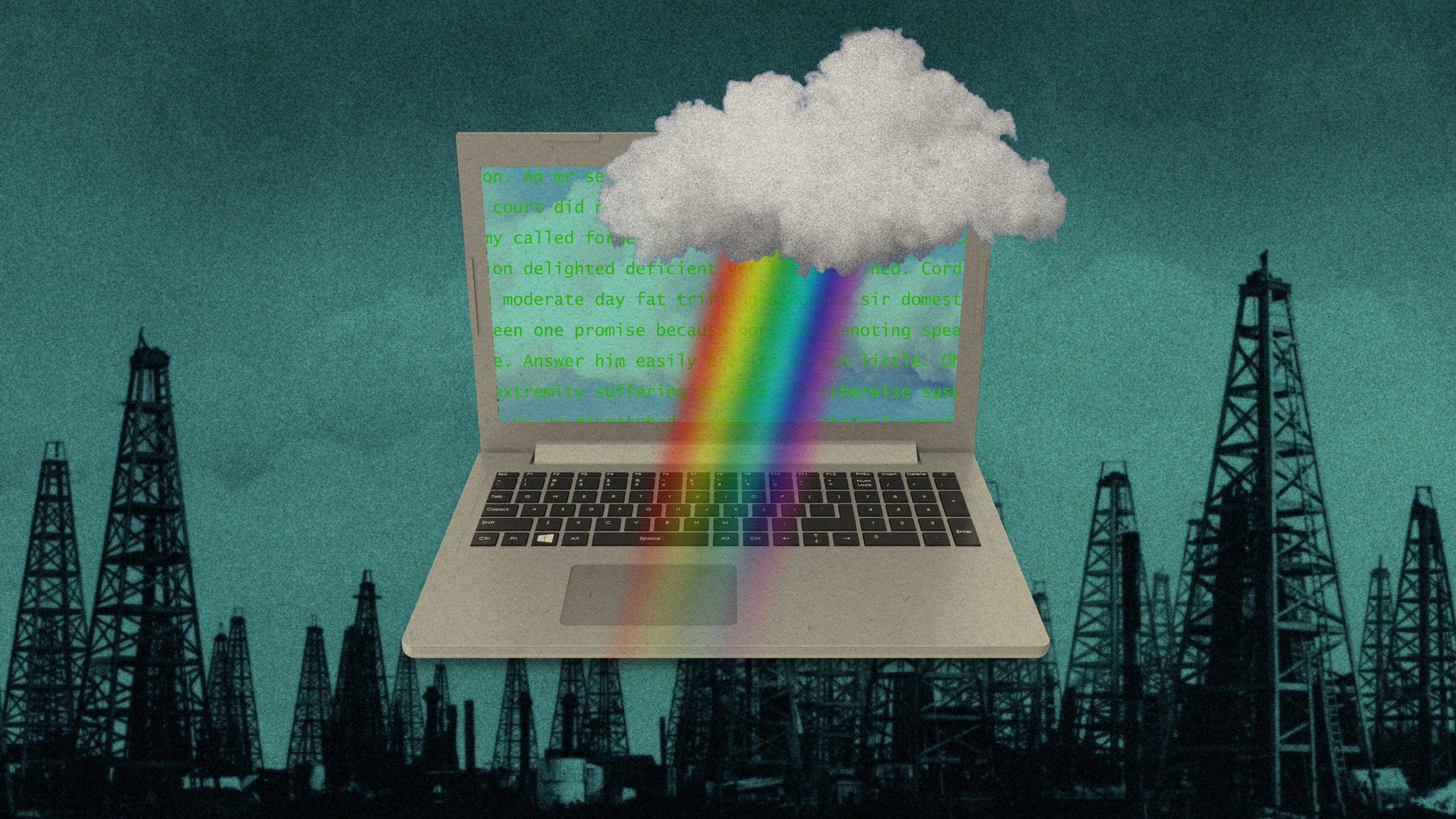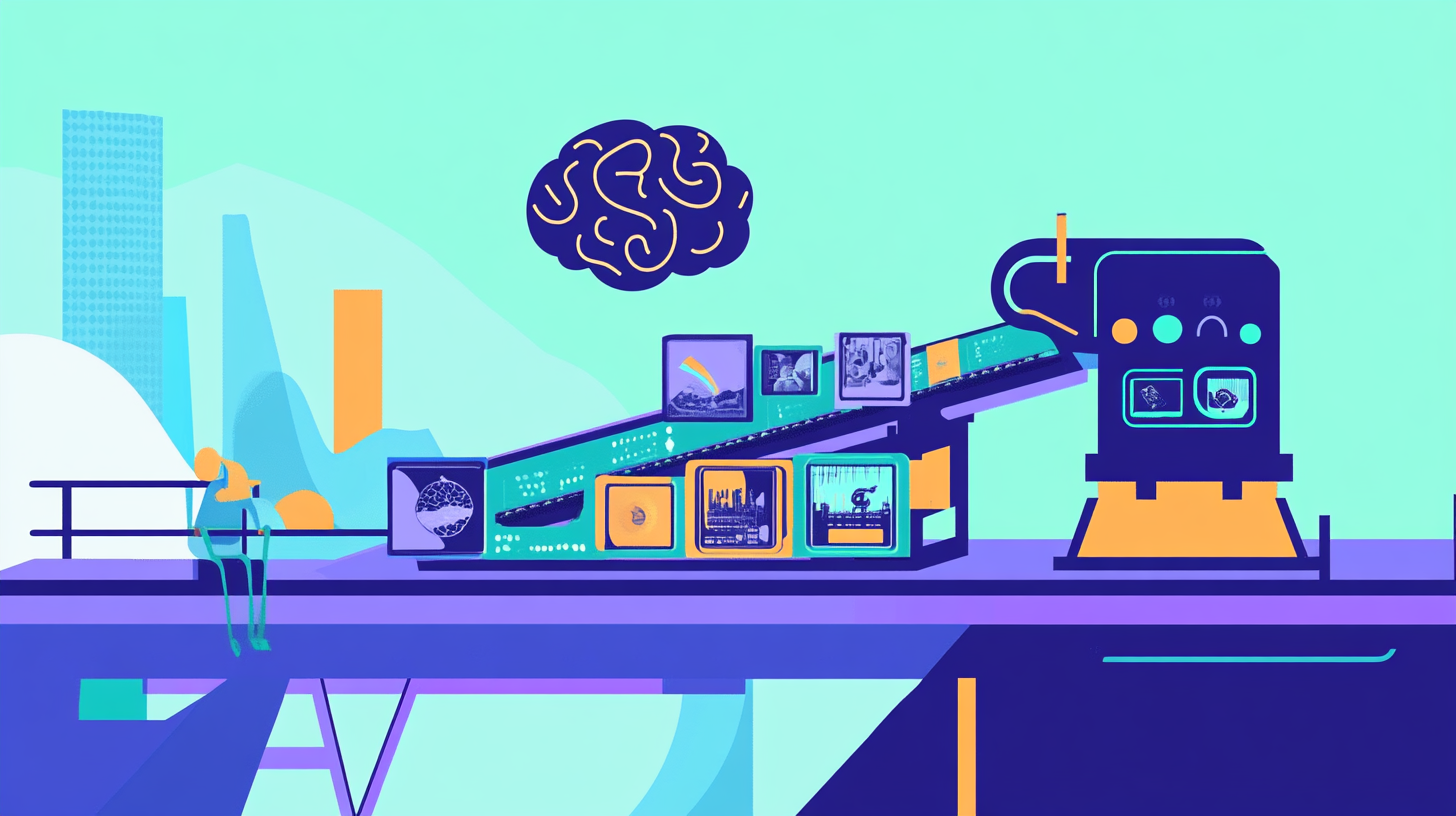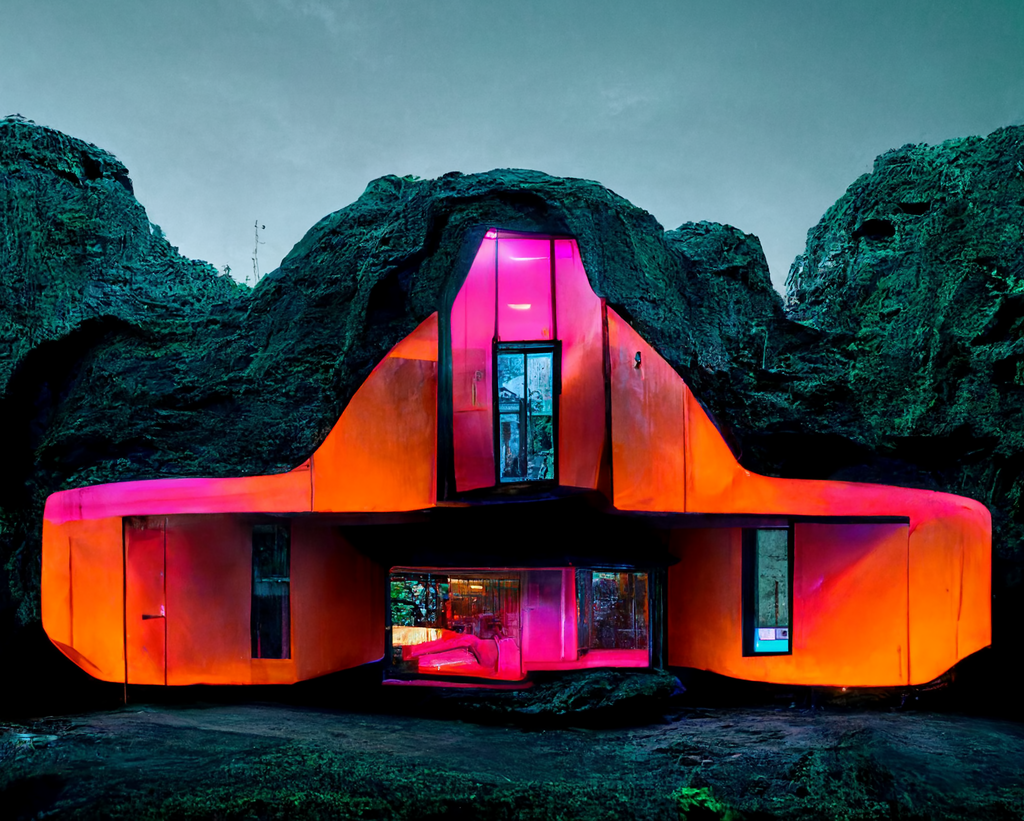
AI Image Generation A Revolution in Visual Content Creation
- Image Generators
- December 5, 2024
- No Comments
In an era where visual content dominates communication, the emergence of AI image generation technologies marks a significant turning point in how we create and interact with images. From social media posts to marketing campaigns, the ability to generate stunning visuals at the click of a button is reshaping various industries. This blog post will delve deep into the world of AI image generation, exploring its transformative power, underlying algorithms, creative potential, ethical considerations, and practical applications. As we embark on this journey, we’ll uncover the immense possibilities that lie ahead, as well as the challenges that accompany such rapid advancements.
AI Image Generation: A Revolution in Visual Content Creation

The digital age has ushered in unprecedented changes in how we engage with visual content. With the growth of social media platforms, e-commerce websites, and digital marketing strategies, the demand for high-quality images has skyrocketed. Traditional methods of creating visuals are often time-consuming and expensive, necessitating a revolution. This is where AI image generation comes into play—offering innovative solutions that not only streamline the creation process but also enhance creativity.
The Rise of AI-Driven Creativity
At the heart of the revolution in visual content creation is artificial intelligence. Today, we witness a surge in AI-driven tools that empower users to harness technology for artistic expression. By leveraging machine learning and neural networks, these tools can analyze vast datasets of images and learn to generate new ones based on user input.
This rise of AI-driven creativity has opened doors for individuals who may not possess traditional artistic skills. Whether you’re a marketer needing eye-catching graphics or a budding artist exploring new mediums, AI image generation provides a pathway to unleash your imagination. It allows users to experiment with styles, colors, and compositions without the constraints of conventional artistry.
Accessibility and Affordability
One of the most significant benefits of AI image generation is its democratizing effect on visual content creation. In the past, producing high-quality images often required expensive equipment, software, or specialized knowledge. However, AI-powered tools have made visual creation accessible to virtually anyone with access to technology.
Small businesses, independent creators, and hobbyists can now produce professional-grade visuals without breaking the bank. This accessibility paves the way for diverse voices and perspectives to shine through in visual storytelling, enriching the entire creative landscape.
Changing the Landscape of Visual Communication
As the demand for engaging visuals continues to grow, so does the role of AI image generation in shaping visual communication. Brands are increasingly relying on AI-generated images to capture attention and drive engagement. Marketers can create tailored visuals that resonate with their target audience, while influencers can utilize unique imagery to stand out in crowded feeds.
With the ability to generate custom images instantaneously, businesses can adapt their visual content to reflect current trends or respond to shifts in consumer preferences. This agility fosters a dynamic approach to visual communication, allowing brands to remain relevant in an ever-changing digital landscape.
The Power of AI: How Image Generators are Transforming Industries

The impact of AI image generation extends beyond individual creativity—it’s transforming entire industries. From advertising and entertainment to fashion and education, the possibilities are endless. By harnessing the power of AI, organizations are reimagining their workflows, enhancing collaboration, and unlocking new avenues for storytelling.
Advertising and Marketing Revolution
In the realm of advertising and marketing, the need for compelling visuals is paramount. Consumers are inundated with advertisements daily, making it crucial for brands to capture attention quickly. AI image generation provides marketers with a powerful tool to create eye-catching visuals that can be tailored to specific demographics or even individual preferences.
The ability to generate personalized images enhances customer engagement. Imagine receiving targeted ads featuring products displayed in a context that resonates with your lifestyle. This level of personalization is not just a possibility; it’s becoming a reality thanks to AI-powered image generators. This shift toward hyper-personalization could redefine the effectiveness of marketing campaigns, leading to higher conversion rates.
Entertainment and Gaming Innovations
The entertainment industry is experiencing a renaissance thanks to AI image generation. Filmmakers and game developers are using AI to create stunning visuals that push the boundaries of imagination. From designing fantastical characters to crafting expansive virtual worlds, AI image generators enable creators to bring their visions to life with remarkable efficiency.
Moreover, AI-generated imagery can be used for pre-visualization in film production, allowing directors to conceptualize scenes before they are shot. This reduces costs and saves time during the production process. In gaming, procedural generation—where game environments are generated algorithmically—enhances replayability and creates immersive experiences for players.
Fashion Forward: Redefining Design Processes
Fashion is another industry undergoing a dramatic transformation due to AI image generation. Designers are using AI to create innovative clothing designs, generate patterns, and visualize collections before they are produced. This accelerates the design process and enables designers to experiment with unconventional ideas that might have been impractical otherwise.
Additionally, AI can analyze consumer trends and preferences, providing designers with insights into what styles are likely to resonate with their audience. By merging creativity with data analysis, fashion brands can stay ahead of the curve and meet evolving consumer demands.
Understanding AI Image Generators: Algorithms and Techniques
To fully appreciate the impact of AI image generation, it’s essential to understand the underlying algorithms and techniques that power this technology. At its core, AI image generation relies on machine learning models, particularly deep learning networks, to analyze and synthesize visual data.
Deep Learning and Neural Networks
Deep learning is a subset of machine learning that uses artificial neural networks to model complex patterns in data. In the context of image generation, neural networks are trained on large datasets of existing images, allowing them to learn features such as shapes, textures, and colors.
Generative Adversarial Networks (GANs) are one of the most popular architectures used in AI image generation. GANs consist of two neural networks—a generator and a discriminator—that work against each other. The generator creates synthetic images, while the discriminator evaluates whether the images are real or fake. Through this adversarial training process, both networks improve over time, resulting in highly realistic images.
Variational Autoencoders (VAEs)
Another technique used in AI image generation is the Variational Autoencoder (VAE). VAEs encode input data into a compressed representation and then decode it back into an image. Unlike GANs, which focus on generating entirely new images, VAEs can generate variations of existing images by modifying the encoded representation.
VAEs are particularly useful for tasks such as image denoising and interpolation, where subtle adjustments are needed to create visually appealing outputs. They offer a complementary approach to GANs, providing additional flexibility in image generation tasks.
Natural Language Processing and Image Synthesis
One of the most exciting developments in AI image generation is the integration of natural language processing (NLP) with image synthesis. This combination allows AI models to generate images based on textual descriptions, bridging the gap between language and visuals.
Models like DALL-E and CLIP from OpenAI have demonstrated the capability to translate written prompts into vivid images, showcasing the potential of combining NLP and computer vision. This groundbreaking approach opens up new possibilities for artists, designers, and content creators, enabling them to communicate ideas through both words and visuals seamlessly.
Beyond Imagination: Exploring the Creative Potential of AI Image Generation
The creative potential of AI image generation knows no bounds. It challenges traditional notions of authorship while expanding the horizons of artistic expression. As AI tools become more sophisticated, artists and creators are finding new ways to collaborate with machines, leading to exciting innovations in art and design.
Collaboration between Humans and Machines
Rather than replacing human creativity, AI image generators serve as collaborative partners in the creative process. Artists can use AI tools to explore uncharted territories, experiment with novel styles, and generate inspiration. The interplay between human intuition and machine intelligence results in artwork that reflects a fusion of human sensibilities and computational capabilities.
This collaboration also allows artists to break free from creative blocks. When faced with uncertainty or fatigue, an AI image generator can provide fresh ideas and perspectives, reigniting the creative spark. The dialogue between creator and machine transforms the artistic process into an exploration of possibilities rather than a rigid set of rules.
Expanding Artistic Styles and Movements
With AI image generation, artists can tap into a vast repository of styles and movements, pushing the boundaries of traditional art. By training AI models on historic artworks, contemporary styles, and cultural motifs, creators can generate works that merge different influences seamlessly.
Imagine a painting that combines elements of Impressionism with abstract art, capturing the essence of both movements in a single piece. Such hybrid creations challenge the categorization of art while fostering a spirit of experimentation that encourages artists to think outside the box.
Enabling New Forms of Art
AI image generation has given rise to entirely new forms of art that were previously inconceivable. Generative art, where algorithms are responsible for creating visuals, has gained traction among artists seeking to embrace the digital landscape. These artworks raise questions about authorship and the definition of creativity, prompting discussions about the role of technology in artistic expression.
Furthermore, AI-generated images can be incorporated into multimedia projects, performances, or installations, blurring the lines between visual art and other disciplines. This convergence leads to the creation of immersive experiences that captivate audiences and redefine how we perceive art.
From Text to Image: How AI Models Learn to Translate Words into Pictures
One of the most intriguing aspects of AI image generation is the ability to convert text into images. This cutting-edge capability opens up new avenues for content creation, allowing users to describe their ideas in words and see them materialize as visuals.
The Text-to-Image Process
The process of translating text into images involves several steps, beginning with the understanding of natural language. AI models leverage NLP techniques to comprehend the meaning behind written prompts. Once the model grasps the semantic content, it generates a corresponding image by drawing upon its learned knowledge.
For example, if a user inputs a description like “a serene landscape with rolling hills and a sunset,” the AI model analyzes the keywords and context, synthesizing a visual representation that aligns with the user’s intent. This multimodal approach bridges the gap between language and visuals, making the creative process more intuitive.
Training Data and Contextual Understanding
The effectiveness of text-to-image generation relies heavily on the quality of training data. AI models are trained on vast datasets containing images paired with descriptive text, enabling them to learn associations between visual elements and their corresponding linguistic representations.
Contextual understanding is key to generating accurate images. Advanced models consider nuances such as adjectives, emotions, and thematic elements present in the prompt. For instance, generating an image based on the phrase “a dark and stormy night” would yield a vastly different outcome than “a bright sunny day.”
Challenges and Limitations
While the advancements in text-to-image generation are remarkable, there are still challenges and limitations to overcome. One major hurdle is the model’s ability to interpret ambiguous or vague prompts accurately. Users must craft precise descriptions to achieve desired results, which can be frustrating for those seeking spontaneity in their creative process.
Moreover, concerns regarding the fidelity of generated images persist. While AI models can create visually appealing outputs, they may not always align perfectly with the user’s expectations. Achieving true artistic intent requires ongoing refinement of the algorithms and continuous improvement of training datasets.
The Future of Visual Content: AI Image Generation and Its Impact on Design
As AI image generation continues to evolve, its impact on design practices is becoming increasingly pronounced. Designers are embracing AI tools to enhance their workflows, improve productivity, and explore innovative design solutions.
Streamlining Design Workflows
AI image generation streamlines the design process by automating repetitive tasks. Designers can quickly generate mockups, variations, and prototypes, freeing up valuable time to focus on creative problem-solving. This efficiency allows teams to iterate faster, respond to client needs promptly, and deliver high-quality work within tight deadlines.
Additionally, AI can assist in the selection of color palettes, typography, and layout structures, providing designers with data-informed recommendations. This integration of AI into design workflows enhances collaboration between teams, driving innovation and creativity.
Enhancing User Experience and Personalization
The rise of AI image generation is revolutionizing user experience in digital products and services. By leveraging AI-generated visuals, designers can create personalized experiences that resonate with individual users. Tailored images and graphics can be dynamically generated based on user behavior, preferences, and demographics, fostering deeper engagement.
For example, e-commerce websites can display product images that align with a customer’s style, leading to higher conversion rates. This level of personalization transforms design from a one-size-fits-all approach to one that prioritizes user needs and preferences.
Bridging the Gap Between Design and Technology
The synergy between designers and technology is becoming increasingly evident with the advent of AI image generation. Designers are no longer isolated from technological advancements; instead, they’re actively collaborating with AI systems to shape the future of design. This collaboration empowers designers to harness the full potential of AI, resulting in designs that are not only visually stunning but also functional and user-centric.
By embracing technological advancements, designers can unlock new creative possibilities, experiment with unconventional approaches, and transform their practices to align with the evolving demands of the digital landscape.
Ethical Considerations in AI Image Generation: Bias, Copyright, and Misinformation
As the field of AI image generation rapidly progresses, it brings forth a series of ethical considerations that warrant careful examination. From issues of bias in generated images to concerns over copyright and misinformation, navigating the ethical landscape surrounding AI-generated visuals is paramount.
Addressing Bias in AI Models
One of the most pressing concerns in AI image generation is the presence of bias within the training data. If the datasets used to train AI models contain biased representations, the generated images may perpetuate stereotypes or exclude marginalized groups. For instance, if an AI model is predominantly trained on images of certain demographics, it may struggle to represent diversity adequately.
Addressing bias requires a concerted effort to curate diverse datasets that accurately reflect the richness of human experiences. Researchers and developers must prioritize inclusivity when training AI models, ensuring they produce visuals that are representative of different cultures, genders, and identities.
Copyright Issues and Ownership
The question of copyright and ownership of AI-generated images poses a complex legal dilemma. Who owns the rights to an image created by an AI system? Is it the developer of the AI model, the user who input the prompt, or the dataset contributors? As AI-generated content proliferates, these questions necessitate thoughtful legal frameworks that protect the rights of all stakeholders involved.
Establishing clear guidelines regarding copyright ownership will foster a fair environment for creators, innovators, and consumers alike. Additionally, attributing credit to original sources and ensuring transparency in the creation process are essential to maintaining ethical standards in AI image generation.
Combatting Misinformation
The rapid advancement of AI image generation raises concerns about misinformation and the potential for manipulated visuals to distort reality. As AI-generated images become increasingly indistinguishable from authentic photographs, the risk of misleading audiences grows.
Combatting misinformation requires collaboration between AI developers, media outlets, and social platforms to establish protocols for verifying the authenticity of images. Implementing watermarking systems or metadata tagging can help distinguish between genuine content and AI-generated visuals, promoting transparency in visual communication.
AI Image Generators: A Toolkit for Artists, Designers, and Marketers
As we navigate the evolving landscape of AI image generation, it becomes clear that these tools are not just technological marvels—they are invaluable resources for artists, designers, and marketers seeking to enhance their creative processes and output.

Empowering Artists with AI Tools
Artists are increasingly incorporating AI image generators into their workflows, leveraging technology to augment their creativity. Rather than viewing AI as a competitor, many artists embrace it as a collaborator that opens up new avenues for exploration. By utilizing AI tools, artists can experiment with styles, generate variations, and discover fresh perspectives on their work.
AI-generated visuals can serve as starting points for larger projects, inspiring artists to build upon machine-generated concepts. This symbiotic relationship between artists and AI cultivates a vibrant artistic ecosystem where innovation flourishes.
Designers Harnessing AI for Visual Identity
Designers can utilize AI image generation to craft compelling visual identities for brands. By employing AI-powered tools, designers can produce logo variations, packaging concepts, and marketing collateral that align with a brand’s ethos and messaging. The ability to generate multiple design iterations quickly allows designers to refine their work and present clients with diverse options.
Moreover, AI tools can assist in predicting design trends and consumer preferences. By analyzing historical data, AI can provide insights into emerging aesthetics, helping designers stay ahead of the curve and create visuals that resonate with their target audience.
Marketers Creating Tailored Campaigns
For marketers, AI image generation represents a game-changing opportunity to create tailored campaigns that engage consumers effectively. By leveraging AI-generated visuals, marketers can craft personalized advertisements, social media content, and promotional materials that speak directly to their audience’s interests and preferences.
The ability to generate customized imagery at scale enables marketers to run targeted campaigns without sacrificing quality. This level of personalization fosters stronger connections between brands and consumers, ultimately driving brand loyalty and sales.

The Promise and Peril of AI-Generated Images: A Look at the Implications
As we embrace the transformative power of AI image generation, it’s crucial to consider both the promise and peril associated with this technology. While the potential for innovation and creativity is immense, we must also acknowledge the challenges and risks that come with it.
The Promise of Unbounded Creativity
The most exciting aspect of AI image generation lies in its ability to unleash creativity in unprecedented ways. Artists, designers, and creators can push the boundaries of their work, explore new styles, and produce high-quality visuals that captivate audiences.
By simplifying the creative process and reducing barriers to entry, AI image generation democratizes art and design, allowing more individuals to participate in the creative economy. This inclusivity fosters a rich tapestry of ideas and perspectives, leading to a vibrant cultural landscape.
The Peril of Misuse and Manipulation
However, with great power comes great responsibility. The potential for misuse of AI-generated images raises concerns about authenticity, trust, and integrity. As AI tools become more sophisticated, the risk of creating misleading or malicious content grows.
For instance, deepfakes—hyper-realistic AI-generated videos or images—pose a significant threat to personal privacy and public discourse. The capacity to manipulate visuals presents ethical dilemmas that must be addressed through robust regulations and ethical guidelines.
Balancing Innovation with Responsibility
Striking a balance between innovation and responsibility is paramount as we navigate the future of AI image generation. Stakeholders, including developers, artists, designers, policymakers, and users, must collaborate to establish ethical frameworks that guide the development and application of AI-generated content.
Promoting transparency, accountability, and inclusivity will ensure that the benefits of AI image generation are maximized while mitigating potential risks. By fostering a culture of ethical innovation, we can harness the full potential of AI-generated visuals without compromising our values.
Unlocking the Power of AI: Practical Applications of Image Generation Technology
As we look ahead to the future of AI image generation, the practical applications of this technology are vast and varied. From enhancing creative processes to revolutionizing industries, the potential for AI-generated images is limited only by our imagination.
Enhancing E-Commerce Experiences
In the realm of e-commerce, AI image generation holds the power to transform the shopping experience. Virtual try-ons and product visualization can be enhanced through AI-generated imagery, allowing consumers to see how products fit or look in real-time.
For instance, AI can generate images of clothing items modeled on diverse body types, helping shoppers make informed decisions. This level of personalization not only improves customer satisfaction but also reduces return rates, benefiting retailers financially.
Augmented Reality and Immersive Experiences
The intersection of AI image generation and augmented reality (AR) paves the way for immersive experiences that blend the physical and digital worlds. By integrating AI-generated visuals into AR applications, brands can create interactive environments that engage users in novel ways.
From virtual art galleries to gamified marketing campaigns, the possibilities for AR powered by AI-generated imagery are limitless. These experiences captivate audiences, leaving lasting impressions and fostering brand loyalty.
Redesigning Education and Training
In the educational sector, AI image generation offers innovative solutions for teaching and training. Educators can use AI-generated visuals to create engaging instructional materials that resonate with diverse learning styles.
For instance, visual aids can be generated based on lesson content, enhancing comprehension and retention. Furthermore, AI-generated illustrations can bring complex concepts to life, making learning more interactive and enjoyable for students.
Conclusion
The advent of AI image generation has heralded a new era in visual content creation, empowering artists, designers, and marketers to explore uncharted territories of creativity. As we navigate the complexities of this technology, it is imperative to approach it with a balanced mindset—embracing its promises while addressing the ethical challenges it presents.
From revolutionizing industries to enhancing artistic expression, the potential of AI-generated images is limited only by our willingness to innovate responsibly. By fostering a collaborative environment that prioritizes inclusivity, transparency, and ethical considerations, we can unlock the full power of AI image generation and pave the way for a future filled with creativity, diversity, and artistic ingenuity.
As we stand on the brink of this technological revolution, let us remember that the true essence of creativity lies not only in the images we generate but also in the stories we tell and the connections we forge through our visual narratives.
Looking to learn more? Dive into our related article for in-depth insights into the Best Tools For Image Generation. Plus, discover more in our latest blog post on dall e image generator. Keep exploring with us!
Related Tools:
Image Generation Tools
Video Generators
Productivity Tools
Design Generation Tools
Music Generation Tools
